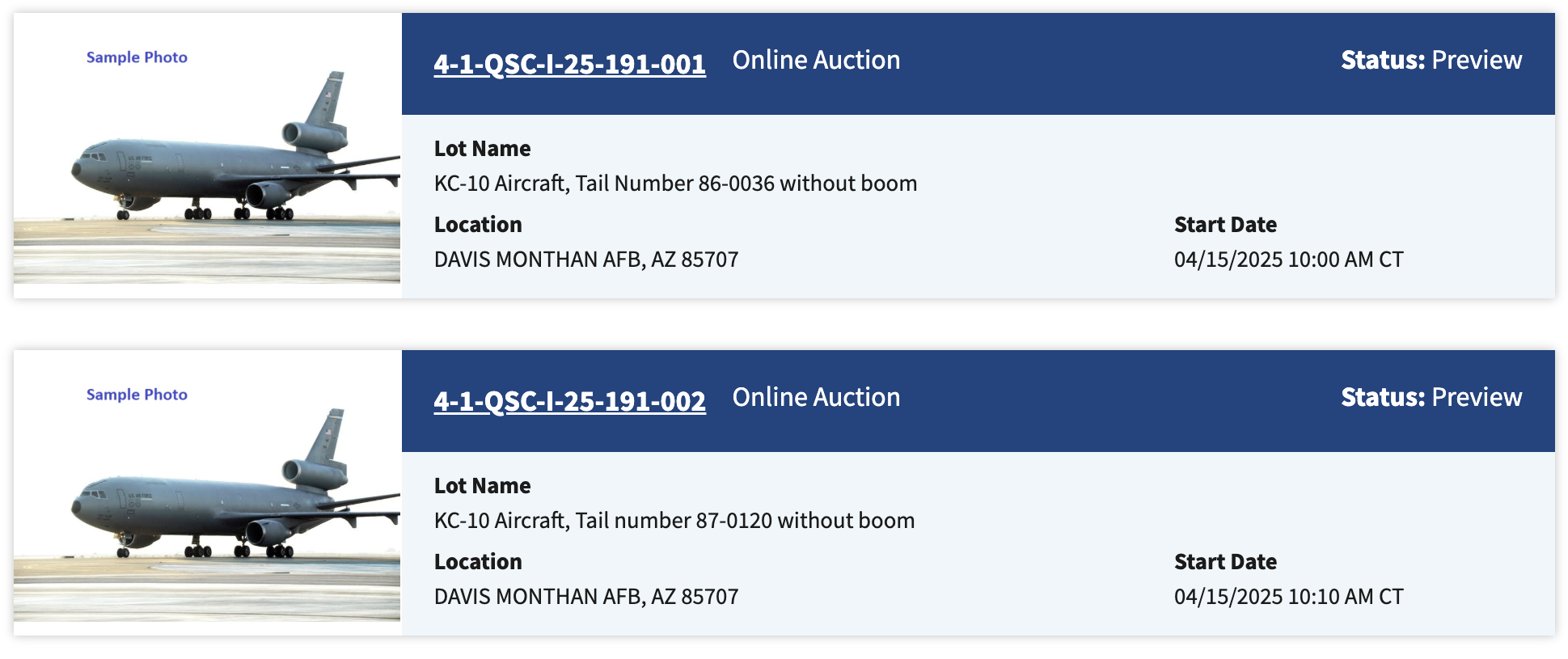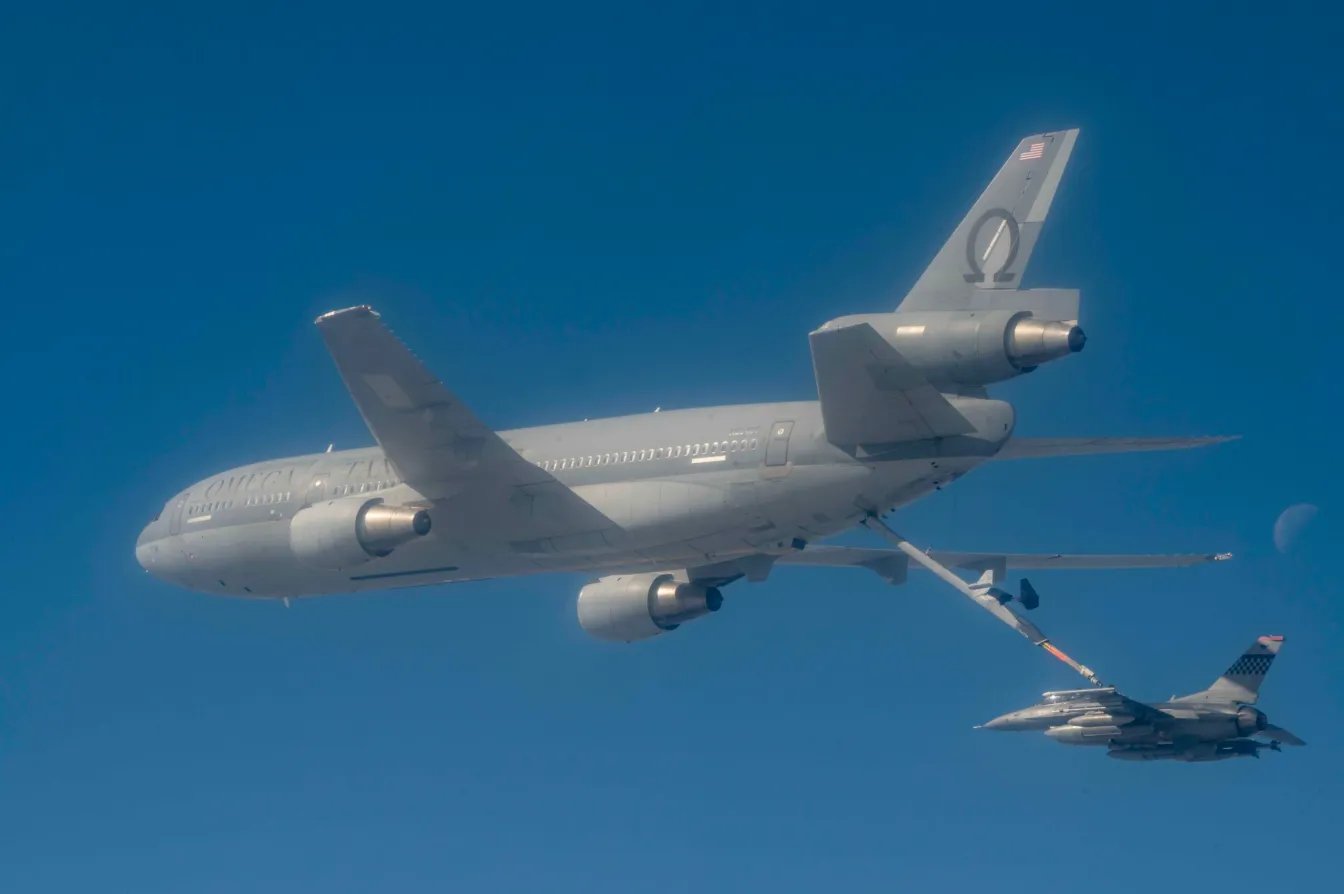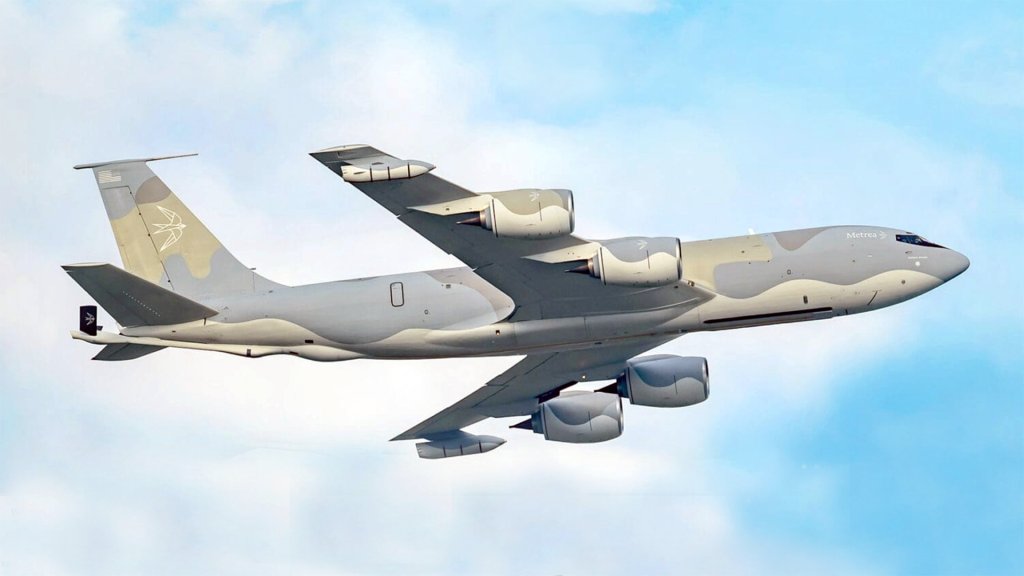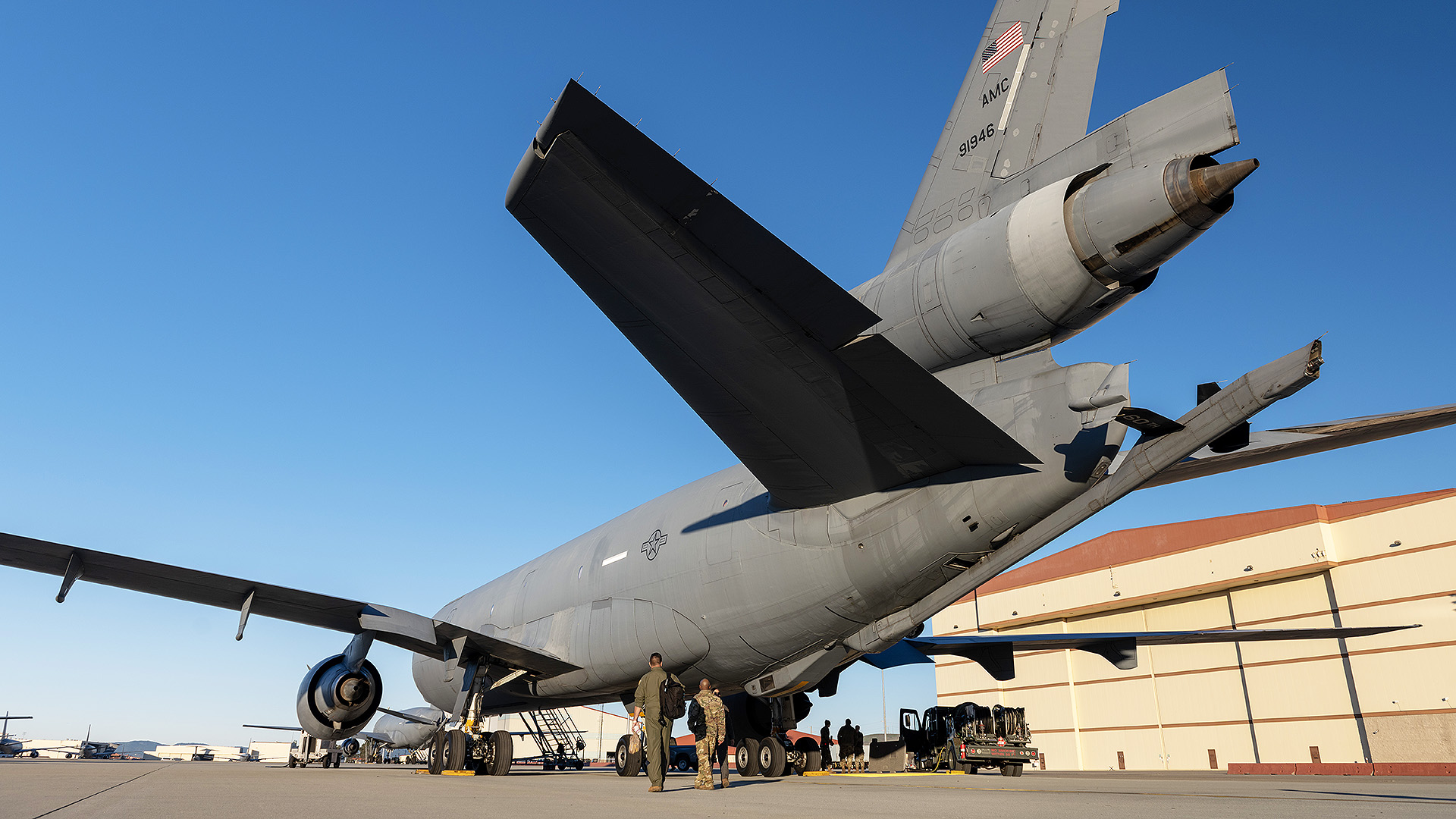The U.S. government is offering for sale 10 of the KC-10 Extender tanker and cargo aircraft, which the Air Force retired the last operational example of in September of 2024. Notably, the aircraft are all being offered without their refueling booms fitted. However, reinstalling these might well be feasible, and even without, there is the option of using a hose-and-drogue system, so the aircraft could be of real interest to one or more of the private aerial refueling companies now operating military-surplus tankers. On the other hand, they could be of interest as spare parts sources for private KC-10s already in operation or to supplement a future acquisition of more of the USAF’s mothballed KC-10 fleet.
The 10 KC-10As are now listed on the GSA Auctions website. The specific tail numbers are 86-0036, 87-0120, 83-0077, 87-0122, 79-1713, 79-1949, 86-0034, 83-0081, 87-0124, and 79-0434.

These aircraft are currently all at the boneyard, in the charge of the 309th Aerospace Maintenance and Regeneration Group (AMARG) at Davis-Monthan Air Force Base in Arizona. As you can read about here, the last Air Force KC-10 was flown to the boneyard on Sept. 26, 2024, after a farewell flight over its base and other locations notable in the type’s history.

In a statement, an Air Force spokesperson told TWZ that all 10 aircraft are currently in a “non-flyable status.”
“Eight are missing one engine due to a GSA sale in 2021,” the spokesperson added. “We put eight engines up for sale and the winning bidder funded the removal of each of the engines.” All of the eight engines that were removed were taken from a wing nacelle, rather than the central/rear fuselage nacelle, although the spokesperson couldn’t clarify if all engines were removed from the same side. It’s also puzzling why the engines were removed in this way, rather than stripping all the powerplants off the required aircraft.
The KC-10s are being offered “without boom” since these aircraft were some of the first to be retired, with their booms being removed for use as spares to support the fleet that remained active at the time. As you can read about here, the KC-10 inventory was fairly rapidly reduced over the last couple of years of the type’s military career.
“In order to make them flyable, the winning bidder will need to work with Boeing to obtain a fly-away kit to seal up the area where the boom systems was,” the Air Force spokesperson added. A customer might choose to reinstall the boom, if that’s possible, which we will address later.

After all, the Air Force acquired the KC-10, which was based on the DC-10-30CF commercial trijet airframe, as a ‘heavy tanker’ to supplement the KC-135 Stratotanker family. With the three main DC-10 wing fuel tanks supplemented by three large fuel tanks under the cargo floor, the Extender accommodated almost twice as much aviation fuel as the KC-135 — more than 356,000 pounds.
Fuel was primarily offloaded via the boom, but the KC-10 had an integrated hose-and-drogue system, allowing it to refuel U.S. Navy and Marine Corps aircraft, as well as probe-equipped receivers flown by other operators, without any further modifications. We have asked the Air Force if the integrated hose-and-drogue is also still fitted in the aircraft being offered.

Twenty KC-10s additionally received wing-mounted pods, allowing multiple probe-equipped receivers to top up simultaneously. It’s not clear if the aircraft listed for sale also have the refueling pods fitted.
While using the KC-10s with underwing refueling pods and centerline basket would likely be possible for any potential customer, it’s not clear how practical it would be to reinstall the refueling booms.

Regardless, as noted earlier, there’s already a precedent for DC-10-derived tankers working with private aerial refueling companies.
Similar to the KC-10 were the two KDC-10 aircraft that were acquired by the Royal Netherlands Air Force and which are now operated by Omega Air, a pioneer in the commercial aerial refueling segment. The Virginia-based company is one of only two private operators that have tankers equipped with booms. Omega also has a single KDC-10 that was converted from a Douglas DC-10-40 for probe-and-drogue refueling.

While Omega might be interested in boosting its DC-10-based tanker fleet, it’s far from the only player in this market segment.
The other company with boom-equipped tankers, Metrea, already operated four KC-135Rs it previously acquired from the Republic of Singapore Air Force, after which it hugely expanded its fleet with the purchase of 14 KC-135 tankers previously flown by the French Air and Space Force. Already on contract with the U.S. Navy, the company has been eyeing major new opportunities with the U.S. military and foreign armed forces. Last month, Metrea announced it had received a contract to provide the Indian Air Force with aerial refueling training, which will involve some of its tankers being based out of Indian Air Force Station Agra in central India.

Metrea could seek to expand their fleet with the KC-10, like Omega has done, by augmenting their KC-707s with KDC-10s. The surplus KC-10 might still attract interest from other companies seeking to take a share of this growth market.
On the other hand, these are well-used aircraft — since they were among the earlier examples to be retired, they are probably also more worn-out than more recent additions to the boneyard. Fresher examples of the KC-10 may still come up for auction or become available via the Department of Defense.
The KC-10 first entered U.S. Air Force service back in 1981. The service acquired a total of 60 examples, although one was later lost in an explosion and subsequent fire while undergoing maintenance at Barksdale Air Force Base in Louisiana in 1987.
The Extender fleet was starting to show its age by 2018 when smoke on the flight deck of one of the aircraft forced the crew to evacuate. A separate fault quickly revealed itself in the same incident, when the crew’s escape slides failed to activate.

While these kinds of issues are far from uncommon in older aircraft designs, the fact that so many commercially operated DC-10s and MD-11s have now left service means any customer for ex-Air Force KC-10s will find them harder to support. As of early this year, only eight DC-10/MD-11 variants were in service around the world.
For the Air Force, meanwhile, there remains a notable gap in aerial refueling capability since the retirement of the KC-10, a problem that is now compounded by the growing understanding that planning for future contingencies, especially in the Indo-Pacific theater, highlights a need for more fuel on tankers, to enable aircraft to operate over huge geographical distances.
When the last of the Air Force KC-10s were sent to the boneyard, TWZ pointed out that at least some of these aircraft could potentially still provide useful service in a contractor-operated form. Based on what we know about the 10 aircraft now being offered, flying them as boom-equipped tankers might not be at all straightforward, and all but two of them will need a new engine fitted. Still, the capability the KC-10 provides remains largely unrivaled. At the very least, they could provide valuable spares for existing or future DC-10-based tanker operators.
Any interested parties can start putting bids in for the aircraft on April 15.
Contact the author: thomas@thewarzone.com
